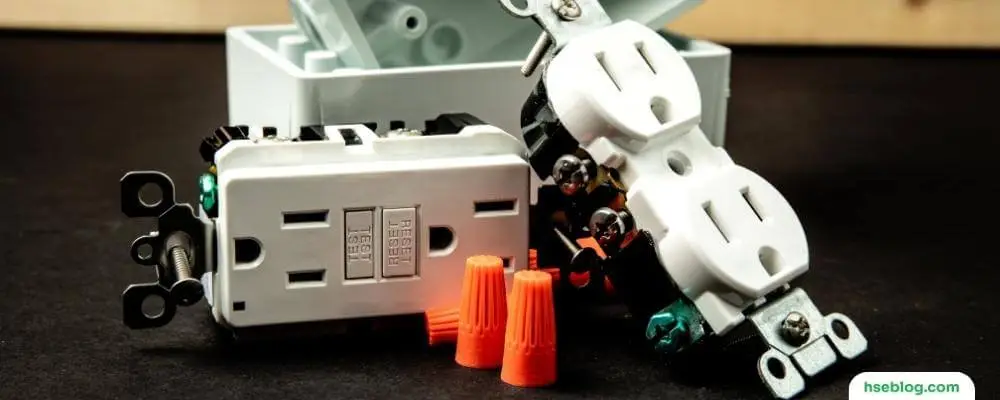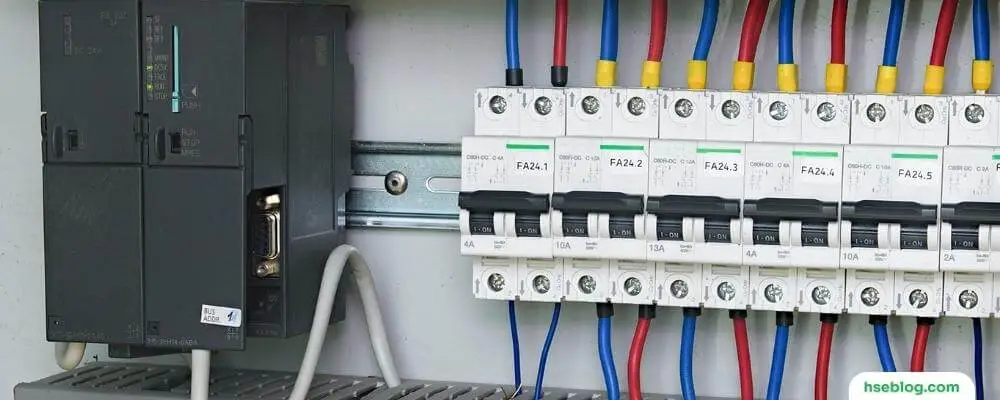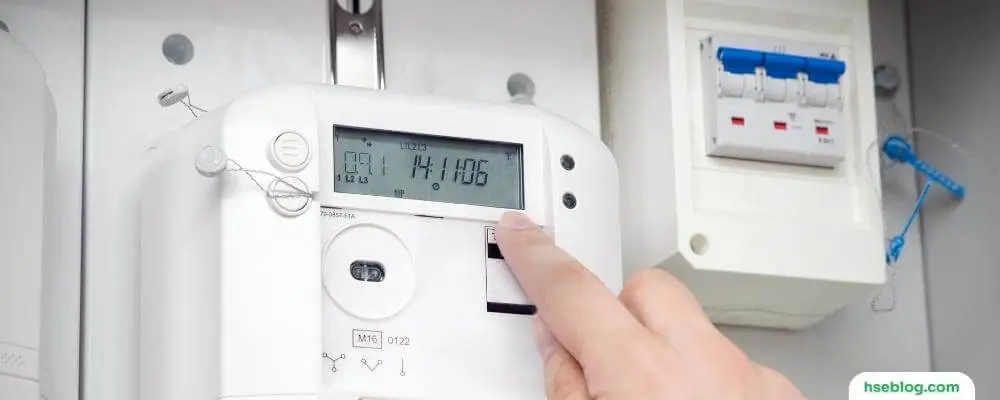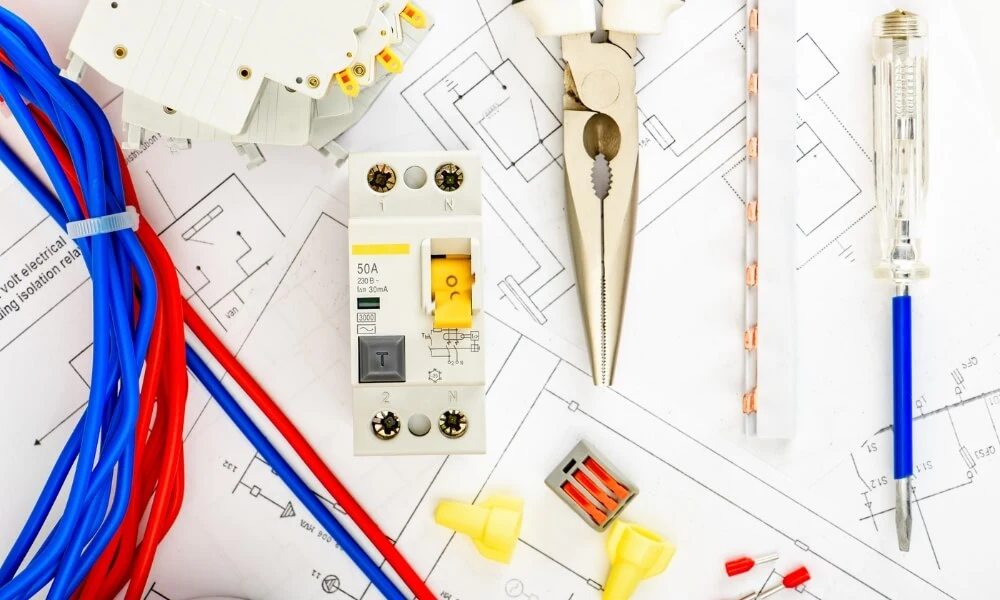The intricate world of electrical systems brims with many integral components, among which the unsung heroes are the Electrical Circuit Protection Devices. These are the sentinels of safety, constantly working behind the scenes, ensuring our homes, workplaces, and industries operate smoothly and securely. They guard against electrical overloads, short circuits, and ground faults, often serving as the last defense against potential accidents and equipment damage.
This blog post dives deep into the realm of these virtual devices, detailing the various types and their unique functionalities. Whether you’re an electrical novice, an engineering student, or a seasoned professional, this comprehensive guide will illuminate circuit protection devices’ complex yet fascinating world. Buckle up as we embark on this enlightening journey through the pathways of electrical safety.
Importance Of Electrical Protection Devices
Electrical protection devices are crucial in maintaining our electrical systems’ safety, reliability, and longevity. Here are some of the key reasons why these devices are so important:
- Safety: First and foremost, electrical protection devices prevent the risk of electrical shocks, fires, and explosions due to overcurrent or short circuits. These devices protect users from harm by cutting off the electrical supply in dangerous situations.
- Equipment Protection: Overcurrent or voltage surges can damage sensitive electrical and electronic equipment. Protection devices such as fuses, circuit breakers, and surge protectors prevent this by interrupting the electrical supply or limiting the voltage during these events.
- Prevent System Overloads: Electrical systems are designed to handle a certain amount of current. When the demand exceeds this limit, the system can become overloaded, causing components to overheat and possibly fail. Circuit breakers and fuses can prevent this by breaking the circuit when current levels get too high.
- Cost Savings: Protective devices can save substantial repair or replacement costs by preventing damage to electrical systems and equipment. In the case of businesses, they can also prevent downtime caused by system failures.
- Compliance with Standards: Electrical protection devices are often required by electrical codes and standards, which aim to ensure the safety and reliability of electrical installations.
- Confidence and Peace of Mind: Knowing that your electrical systems are safeguarded by protection devices can give you peace of mind, whether operating complex industrial machinery or simply using household appliances.
In conclusion, electrical protection devices are vital to any electrical system, providing critical safety measures and helping maintain the system’s overall health. Choosing the right devices for your specific needs is essential, ensuring they’re installed and maintained correctly.

Types Of Circuit Protection Devices
Circuit protection devices are essential components in every electrical system, designed to prevent damage from overcurrent, short circuits, and ground faults. Here are the main types of circuit protection devices:
1. Fuses
A fuse is one of the most basic types of circuit protection devices. It contains a small piece of metal (called a filament) that melts when the current flowing through it exceeds a specified level, which breaks the circuit and stops the current flow. Fuses are categorized into two main types: fast-acting and time-delay. Fast-acting fuses open instantly when the current exceeds the fuse’s rating, while time-delay fuses can tolerate overcurrent conditions for a short period before opening. Fuses are straightforward to install and affordable, but they must be replaced each time they ‘blow’ or burn out, which could be inconvenient in certain applications.
2. Circuit Breakers
Circuit breakers provide a more sophisticated level of protection compared to fuses. They function by tripping a mechanical switch when an overcurrent situation occurs. There are several circuit breakers, including standard, ground fault circuit interrupters (GFCIs), and arc fault circuit interrupters (AFCIs). Each type serves a different purpose and protects against different electrical faults. The main advantage of circuit breakers over fuses is that they can be easily reset after they trip, eliminating the need for replacement.
3. Residual Current Devices (RCDs)
Also known as Ground Fault Circuit Interrupters (GFCIs) in the United States, RCDs are designed to protect against electrocution by detecting ground faults. A ground fault occurs when there’s an unintended path between an electrical current and a grounded surface. RCDs constantly monitor the balance between two conductive wires (the live and neutral wires). If an imbalance occurs (indicating a leakage to the ground), the RCD will automatically cut off the electrical supply to prevent injury.

4. Surge Protection Devices (SPDs)
Surge protection devices are designed to protect electrical equipment from voltage spikes, which can occur due to lightning strikes, power surges, or switching transients in electrical systems. An SPD limits the voltage supplied to an electric device by blocking or shorting the current to reduce the voltage below a safe threshold. Three types of SPDs (Type 1, 2, and 3) provide protection at different levels, from the main supply down to individual outlets.
5. Ground Fault Circuit Interrupters, Or GFCIs
GFCIs are specifically designed to protect people from electric shock. They are typically installed in areas where water is present, such as bathrooms, kitchens, and outdoor outlets. GFCIs compare the outgoing current (from the hot wire to a device) to the returning current (from the device back to the neutral wire). If the GFCI detects a discrepancy as small as 5 milliamperes, it instantly disconnects the circuit, effectively preventing an electric shock.
6. Thermal Circuit Breakers:
Thermal circuit breakers utilize a bimetallic strip, which bends when heated by an overcurrent, triggering the tripping mechanism. This type of breaker can be reset after an overload has been cleared and is often used in automotive and marine applications due to its resilience to short, high-current demands. Thermal circuit breakers may not react as quickly as other types but are especially useful where a short burst of overcurrent is common and not harmful.
7. Motor Protection Circuit Breakers (MPCBs)
Motor protection circuit breakers are specialized devices designed to safeguard motors by providing short-circuit protection, disconnecting means, overload protection, and motor controller functions in one unit. The MPCB can react to current fluctuations common in motors, differentiating between harmful overloads and temporary spikes. It’s worth noting that MPCBs are designed with the characteristics and needs of electric motors, making them particularly suitable for motor protection applications.
The overload protection feature of the MPCB is often thermal, utilizing a bimetallic strip similar to the thermal circuit breaker. Still, it also includes a magnetic trip feature for short-circuit protection. MPCBs also have an adjustable trip setting, allowing for precise motor protection.

Pros And Cons Of Electrical Circuit Protection Devices
Electrical circuit protection devices are essential for safety and proper functioning in every electrical system. However, like all devices, they come with their pros and cons.
Pros of Electrical Circuit Protection Devices:
- Safety: The most significant advantage of these devices is safety. They protect against electric shocks and fires by breaking the circuit during an overload, short circuit, or ground fault.
- Equipment Protection: These devices protect your appliances and devices from damage by shutting off the power when an overcurrent or voltage spike is detected. This protection can save costly equipment repairs or replacements.
- Prevents Overloads: Circuit protection devices monitor the amount of current in a circuit. The device will trip when the current exceeds a certain level, preventing system overloads and potential damage.
- Resettable: Some circuit protection devices, such as circuit breakers, are resettable. This means that they can be reset and reused once tripped due to an overcurrent, unlike fuses that need to be replaced.
- Regulatory Compliance: Many electrical regulations require certain circuit protection devices. By using them, you’re ensuring your electrical system is up to code.

Cons of Electrical Circuit Protection Devices:
- False Trips: Sometimes, these devices can trip even when there’s no fault in the system. This can be due to several factors, such as a power surge or a temporary overload, and can cause unnecessary disruptions.
- Physical Space: Circuit protection devices require physical space in electrical panels or boxes, which may be a limitation in some settings.
- Cost: While these devices are necessary for safety, they add an extra cost to installing an electrical system. More advanced devices, like GFCIs and AFCIs, can be more expensive than basic fuses and circuit breakers.
- Maintenance: Some circuit protection devices, especially more sophisticated ones, require regular testing and maintenance to ensure they work correctly.
- Limited Lifespan: Some circuit protection devices have a limited lifespan depending on the type and usage. For example, a circuit breaker can wear out after numerous trips and must be replaced.
Despite their drawbacks, the importance of circuit protection devices in ensuring the safety and longevity of electrical systems cannot be overstated. The key is to understand the requirements of your specific application and choose the appropriate devices.
Conclusion
Electrical circuit protection devices are our electrical systems’ unsung guardians of safety. From simple fuses and circuit breakers to advanced residual current devices and surge protectors, these components vigilantly monitor and protect our systems from overloads, short circuits, and ground faults. Their presence not only safeguards our homes and workplaces but also ensures the longevity and performance of our electrical equipment.
Recognizing the specific needs of your electrical system and choosing the appropriate circuit protection devices is paramount. Furthermore, always entrust the installation and maintenance of these devices to certified professionals for optimal safety and efficiency. The investment in these devices is a direct investment in the security and reliability of our electrical systems.

